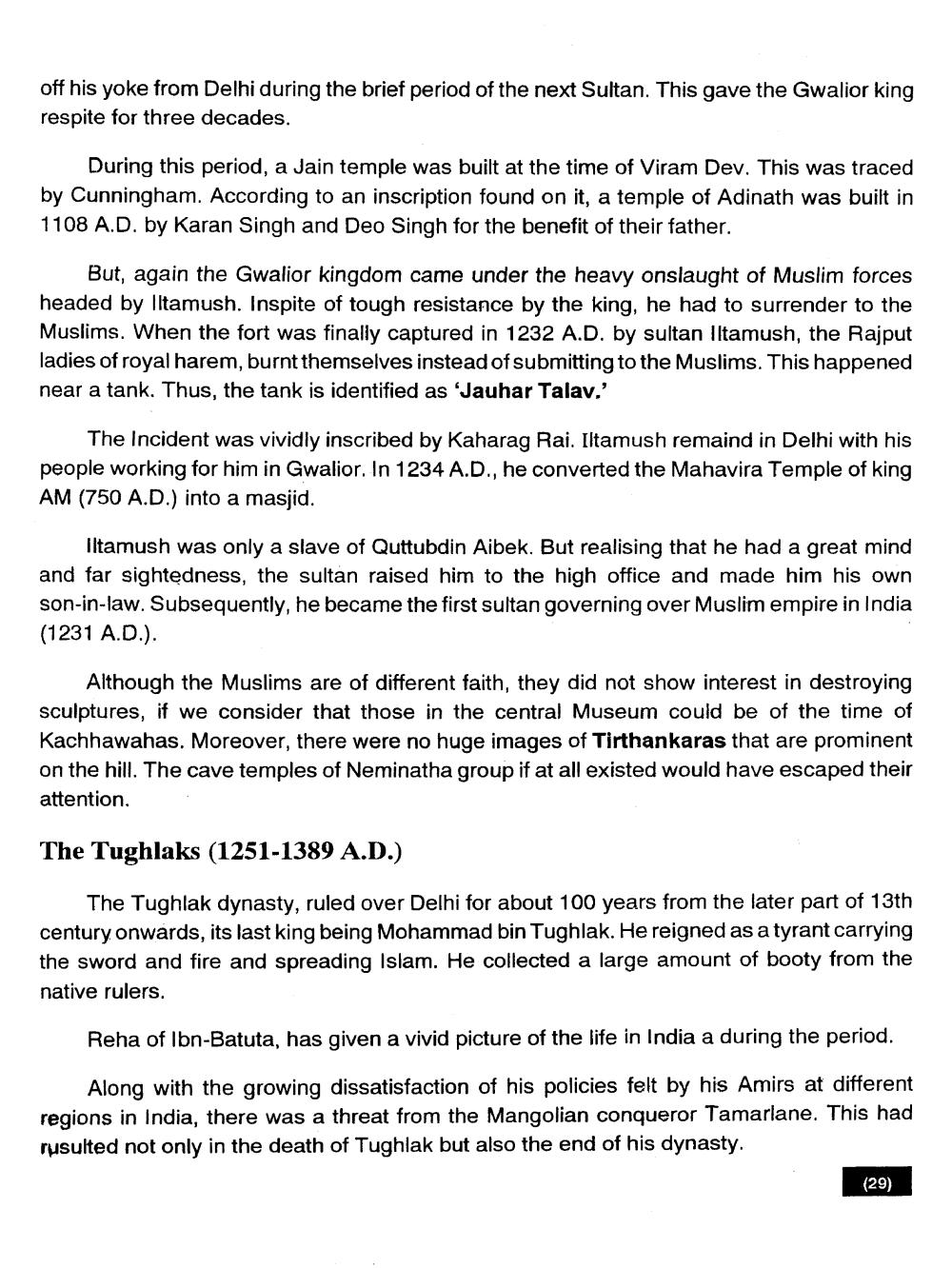________________
off his yoke from Delhi during the brief period of the next Sultan. This gave the Gwalior king respite for three decades.
During this period, a Jain temple was built at the time of Viram Dev. This was traced by Cunningham. According to an inscription found on it, a temple of Adinath was built in 1108 A.D. by Karan Singh and Deo Singh for the benefit of their father.
But, again the Gwalior kingdom came under the heavy onslaught of Muslim forces headed by Iltamush. Inspite of tough resistance by the king, he had to surrender to the Muslims. When the fort was finally captured in 1232 A.D. by sultan Iltamush, the Rajput ladies of royal harem, burnt themselves instead of submitting to the Muslims. This happened near a tank. Thus, the tank is identified as 'Jauhar Talav.'
The Incident was vividly inscribed by Kaharag Rai. Iltamush remaind in Delhi with his people working for him in Gwalior. In 1234 A.D., he converted the Mahavira Temple of king AM (750 A.D.) into a masjid.
Iltamush was only a slave of Quttubdin Aibek. But realising that he had a great mind and far sightedness, the sultan raised him to the high office and made him his own son-in-law. Subsequently, he became the first sultan governing over Muslim empire in India (1231 A.D.).
Although the Muslims are of different faith, they did not show interest in destroying sculptures, if we consider that those in the central Museum could be of the time of Kachhawahas. Moreover, there were no huge images of Tirthankaras that are prominent on the hill. The cave temples of Neminatha group if at all existed would have escaped their attention.
The Tughlaks (1251-1389 A.D.)
The Tughlak dynasty, ruled over Delhi for about 100 years from the later part of 13th century onwards, its last king being Mohammad bin Tughlak. He reigned as a tyrant carrying the sword and fire and spreading Islam. He collected a large amount of booty from the native rulers.
Reha of Ibn-Batuta, has given a vivid picture of the life in India a during the period.
Along with the growing dissatisfaction of his policies felt by his Amirs at different regions in India, there was a threat from the Mangolian conqueror Tamarlane. This had rusulted not only in the death of Tughlak but also the end of his dynasty.
(29)




